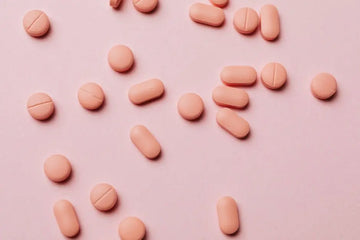Disclaimer: The following information is for educational purposes only and should not be taken as medical advice. This information does not recommend or endorse any specific products. Dietary supplements are not intended to diagnose, treat, cure, or prevent any disease.
The concept of neurodiversity has reshaped our understanding of brain function and ADHD (Attention Deficit Hyperactivity Disorder). Rather than viewing ADHD only as a challenge, the neurodiversity framework, promoted by experts like Dr. Thomas Armstrong, celebrates the unique strengths that ADHD brings to cognitive processing and creative thinking. ADHD can provide a new perspective, highlighting the value of diverse thinking in today’s complex world.
Some of the most creative and successful figures, such as Walt Disney and Bill Gates, have used their ADHD to fuel innovation. Here, we dive into how the ADHD brain works, the strengths it offers, and effective strategies to leverage those strengths.
What Makes the ADHD Brain Different?
Understanding how ADHD affects the brain provides insight into unique ADHD strengths and challenges. Neuroimaging studies have shown structural differences in regions like the prefrontal cortex and white matter, both of which play crucial roles in attention, impulse control, and executive function.
The Role of the Prefrontal Cortex in ADHD
The prefrontal cortex, located at the brain’s front, is responsible for planning, decision-making, and impulse control. Think of it as the brain’s executive center, guiding focus and resisting distractions. Research shows that children with ADHD often have a smaller prefrontal cortex, which can impact attention and impulse control¹.
As individuals with ADHD grow, differences in prefrontal cortex structure may decrease, potentially explaining why ADHD symptoms can become less pronounced with age².
White Matter and Neuroplasticity in ADHD
White matter, a fatty substance that insulates brain nerve fibers, enables communication between brain regions. In ADHD brains, white matter pathways related to attention and impulse control may be less efficient, impacting how quickly and effectively information is transmitted³. However, neuroplasticity—where the brain adapts by forming new neural connections—allows for compensation and growth, turning these differences into opportunities.
The Unique Strengths of ADHD: Creativity, Hyperfocus, and Innovation
ADHD is often linked to creative thinking, hyperfocus, and unique problem-solving abilities. One study found that adults with ADHD frequently excel in creativity, generating original ideas when motivated by specific goals⁴. This creativity, combined with bursts of intense focus, can be a powerful tool in innovative fields that value unique perspectives.
Neurotransmitters and ADHD: Dopamine and Norepinephrine
ADHD involves differences not only in brain structure but also in neurotransmitters, especially dopamine and norepinephrine. These chemical messengers play essential roles in motivation, focus, and impulse control.
Dopamine: The “Reward” Neurotransmitter in ADHD
Dopamine drives the brain’s reward response and motivation. Lower dopamine levels in ADHD brains can make it challenging to maintain focus and complete tasks⁵. However, this also creates the potential for “hyperfocus,” an intense concentration on a task, which allows individuals with ADHD to fully engage in activities they find rewarding.
Norepinephrine: Regulating Attention and Impulse Control
Norepinephrine plays a major role in attention regulation and impulse control. Dysregulation of norepinephrine may affect the brain’s ability to prime itself for focus, especially in the prefrontal cortex⁶. Boosting norepinephrine has been shown to reduce impulsive behavior in studies, further highlighting its role in ADHD management⁷.
How ADHD is Diagnosed: Current Standards and Future Perspectives
In the United States, ADHD diagnosis follows the DSM (Diagnostic and Statistical Manual of Mental Disorders), which defines three types of ADHD: impulsive/hyperactive, inattentive, and combined. While current ADHD assessments focus on behavioral symptoms, examining neurotransmitter levels—like dopamine and norepinephrine—may offer more personalized treatment options in the future.
Effective Strategies to Thrive with ADHD
Harnessing ADHD’s unique strengths starts with practical strategies that align with the ADHD brain’s natural tendencies. Here are a few evidence-backed techniques:
-
Time Blocking for Focus and Productivity: Popularized by productivity expert Cal Newport, time blocking involves scheduling specific tasks in designated time slots. This structured approach reduces distractions and helps ADHD individuals achieve deep focus.
-
Creating a Distraction-Free Environment: Minimizing environmental distractions, turning off phone notifications, and using time-limit apps can help improve concentration and task completion.
-
Exercise for Dopamine Boost: Physical activity releases dopamine, enhancing focus, reducing hyperactivity, and improving behavior in children and adults with ADHD.
-
Nutrition for Optimal Brain Function: Nutrition plays a crucial role in mental performance. Include foods rich in omega-3 fatty acids, B vitamins, and lean proteins in your diet⁸⁻⁹. Staying hydrated is equally important for brain function.
ADHD and Neurodiversity: Embracing the Power of Different Thinking
Embracing ADHD as a unique neurodivergence allows us to see its strengths. Recognizing ADHD as a natural variation in cognition, rather than a deficit, highlights the value of neurodiversity in creating a richer, more innovative world. By understanding how ADHD affects brain chemistry and structure, individuals and families can find strategies that turn ADHD’s unique characteristics into opportunities for growth and success.
If you’re interested in learning more about ADHD brain structure, neurotransmitters, and strategies for neurodivergent success, subscribe to our newsletter for the latest in mental health and brain science.
Sources
1) Hoogman, M., et al. (2019). Brain Imaging of the Cortex in ADHD: A Coordinated Analysis of Large-Scale Clinical and Population-Based Samples. The American Journal of Psychiatry, 176(7), 531–542. https://doi.org/10.1176/appi.ajp.2019.18091033
2) Kazda, L., et al. (2021). Overdiagnosis of Attention-Deficit/Hyperactivity Disorder in Children and Adolescents: A Systematic Scoping Review. JAMA Network Open, 4(4), e215335. https://doi.org/10.1001/jamanetworkopen.2021.5335
3) Fields, R. D. (2010). Change in the brain's white matter. Science, 330(6005), 768–769. https://doi.org/10.1126/science.1199139
4) Boot, N., et al. (2020). Creativity in ADHD: Goal-Directed Motivation and Domain Specificity. Journal of Attention Disorders, 24(13), 1857–1866. https://doi.org/10.1177/1087054717727352
5) Volkow, N. D., et al. (2011). Motivation Deficit in ADHD is Associated with Dysfunction of the Dopamine Reward Pathway. Molecular Psychiatry, 16(11), 1147–1154. https://doi.org/10.1038/mp.2010.97
6) Pliszka, S. R., et al. (1996). Catecholamines in Attention-Deficit Hyperactivity Disorder: Current Perspectives. Journal of the American Academy of Child and Adolescent Psychiatry, 35(3), 264–272. https://doi.org/10.1097/00004583-199603000-00006
7) Economidou, D., et al. (2012). Norepinephrine and Dopamine Modulate Impulsivity on the Five-Choice Serial Reaction Time Task. Neuropsychopharmacology, 37(9), 2057–2066. https://doi.org/10.1038/npp.2012.53
8) Chang, J. P., et al. (2018). Omega-3 Polyunsaturated Fatty Acids in Youths with ADHD. Neuropsychopharmacology, 43(3), 534–545. https://doi.org/10.1038/npp.2017.160
9) Razavinia, F., et al. (2024). Vitamins B9 and B12 in Children with ADHD. International Journal for Vitamin and Nutrition Research, 94(5-6), 476–484. https://doi.org/10.1024/0300-9831/a000809




